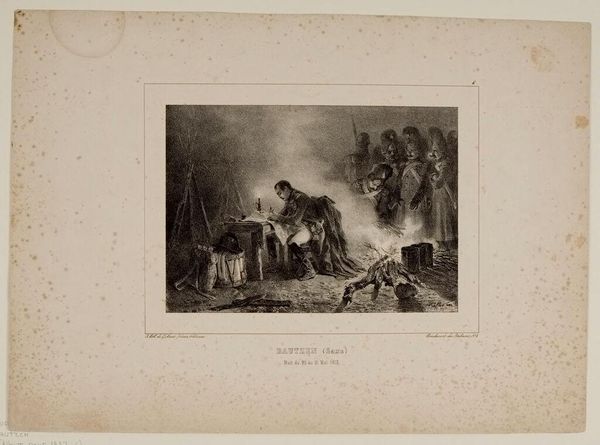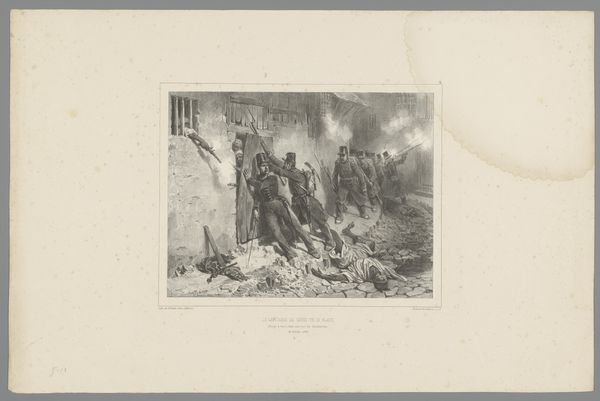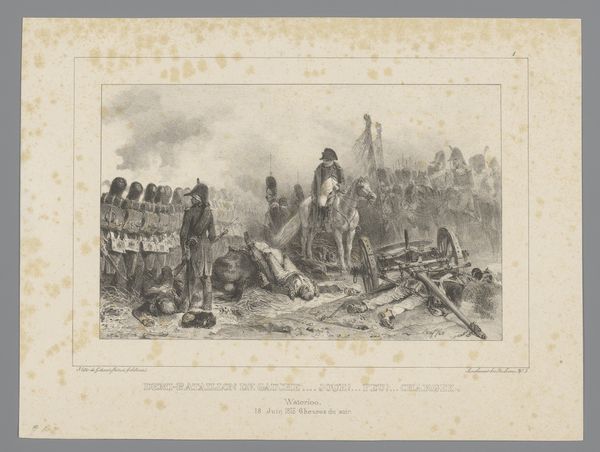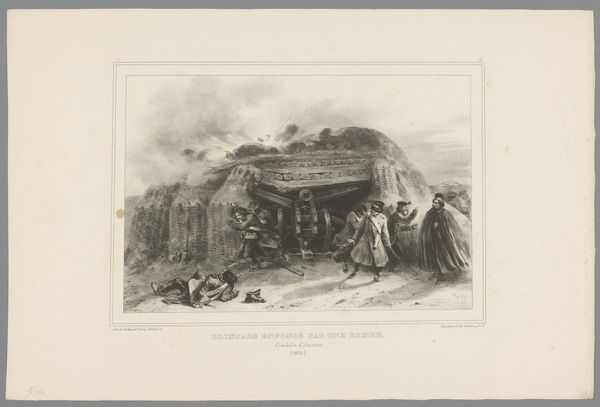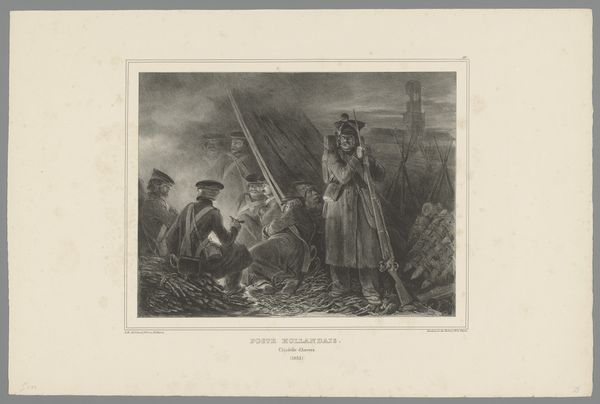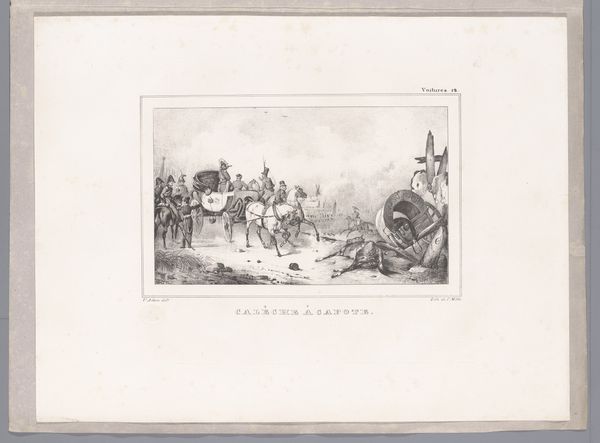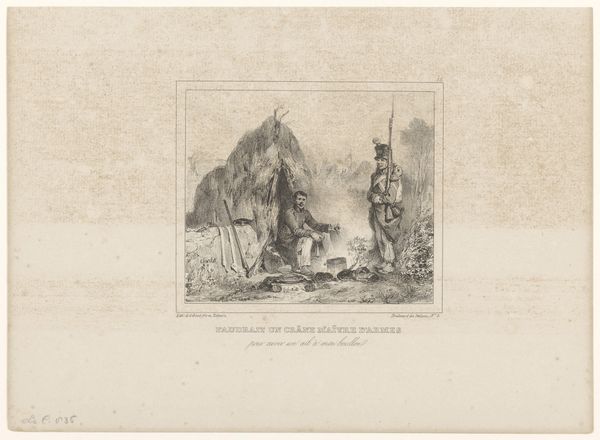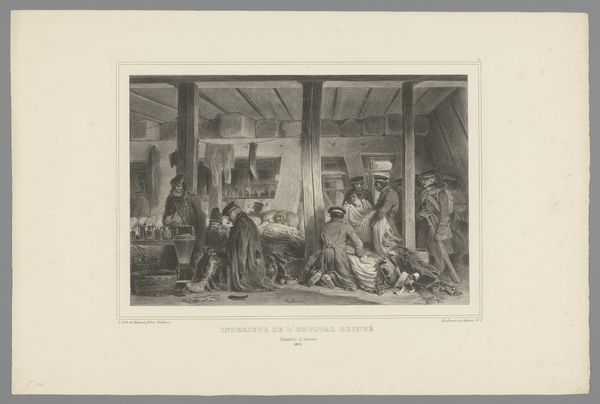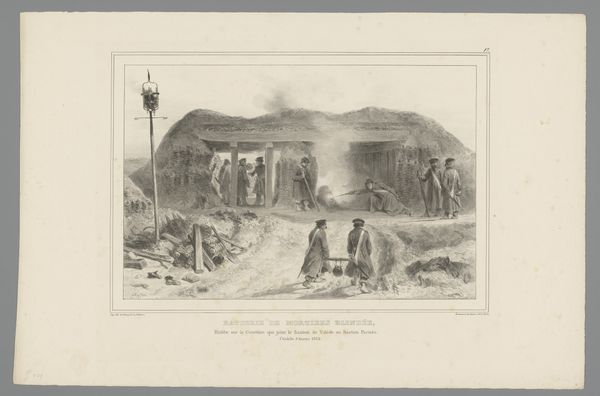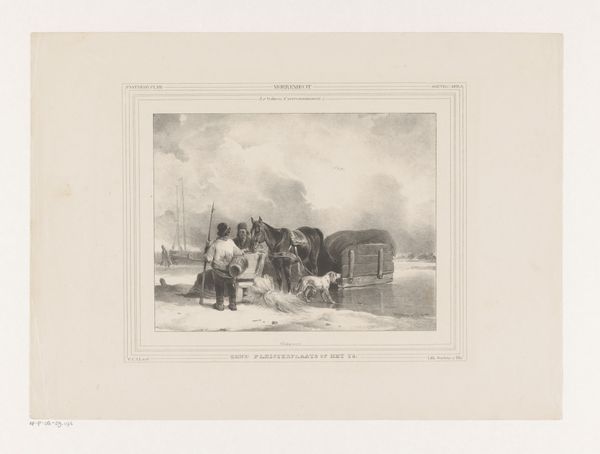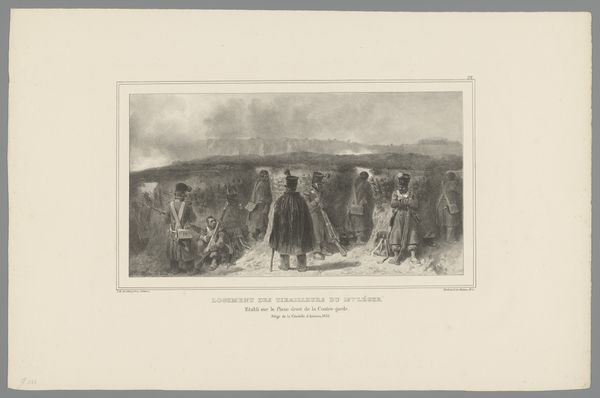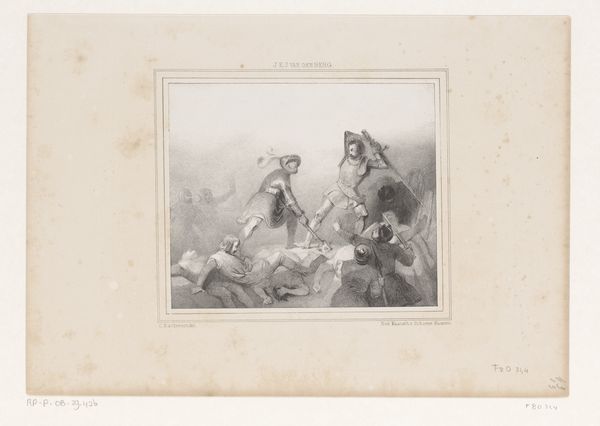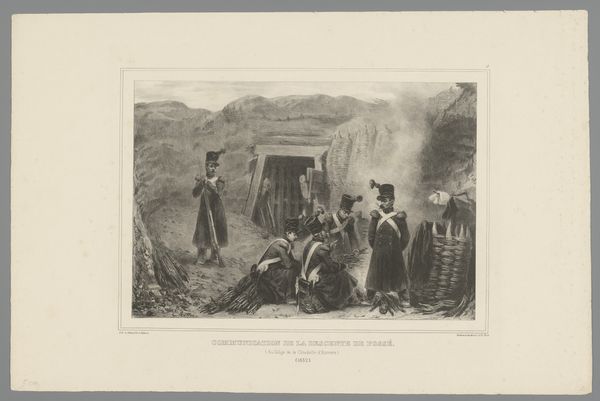
Napoleon bereidt slag bij Bautzen voor in de nacht van 20 op 21 mei 1813 1836
0:00
0:00
drawing, paper, ink
#
portrait
#
drawing
#
narrative-art
#
paper
#
ink
#
romanticism
#
history-painting
Dimensions: height 235 mm, width 338 mm
Copyright: Rijks Museum: Open Domain
Curator: This is Auguste Raffet's "Napoleon bereidt slag bij Bautzen voor in de nacht van 20 op 21 mei 1813," created in 1836 using ink on paper. What are your first thoughts? Editor: The gloominess is striking, really pulls you in. And the sharp contrast of the light source, the small candle illuminating Napoleon amid that large shadowy encampment. Curator: Indeed, Raffet masterfully uses the limited palette to amplify the tension of the moment. The arrangement, particularly the positioning of Napoleon at his desk with his cloak draped across it, emphasizes a very deliberate structure within the scene. Editor: Well, I see more than just light play. It feels immediate—almost journalistic. Look at the material realities: that rickety table, the drum doubling as a seat, the campfire providing shared heat for soldiers. It highlights the everyday labor beneath grand narratives. Curator: It’s not simple documentation. Notice how the textures of the paper and the ink are carefully exploited to create an interplay between depth and flatness? Raffet creates a very palpable sense of anticipation through this technique. Editor: But the material tells a broader story, right? Ink on paper democratized image-making at the time, making historical events like this accessible to a wider audience beyond the elite. That changes our reading, it is not an oil painting for royalty but instead reproducible. Curator: True, though focusing purely on the replicability arguably ignores the intention and execution. Raffet meticulously constructs our viewpoint, employing foreshortening and chiaroscuro to frame Napoleon as the steadfast, solitary strategist. Editor: It's interesting you say solitary. The glow of the fire unites the commander with his army and brings Napoleon out of the elitist and royal imagery that dominated painting. Curator: Perhaps. Regardless, one cannot ignore the visual rhythm—the staccato of figures receding into the dark is just as pivotal as Napoleon's gesture. Editor: I'm just glad we see past the heroic myth, and recognize all the people involved and their relationship with the final product that we now enjoy. Curator: Yes, looking beyond, beneath, and through these layers gives us so much. Editor: Absolutely. It certainly leaves a lasting impression on you, regardless.
Comments
No comments
Be the first to comment and join the conversation on the ultimate creative platform.
